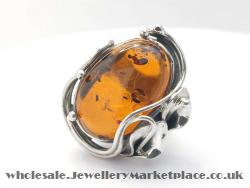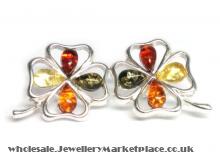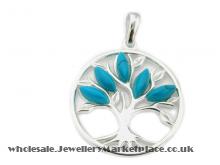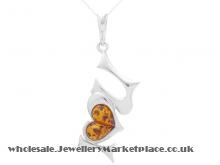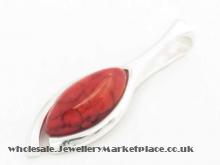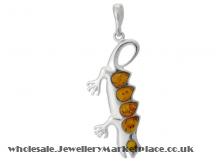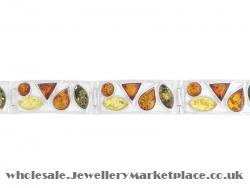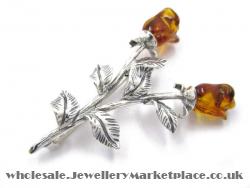Amber - "The Gold of the North"
Amber - known to mineralogists as succinite, from the Latin succinum, which means amber – is a fossilised ancient pine tree resin dating back 40-60 million years.
Amber has a long long history and was highly valued by the Greeks, Phoenicians and Romans because it was not only said to bring good luck but it was also believed to have magical properties and was used to fend off asthma, rheumatism and other diseases.
Unique in its look and appearance amber is truly recognised, even today, as the gold of the North. Insignia Jewellery is proud to be a leading provider of amber jewellery which is without a doubt one of the most individual and unusual organic products.
Formation of Amber
Baltic Amber is a fossilised tree resin dating back 40-60 million years. Neither the exact name of that tree nor the reasons for its over-abundance in resin have been so far satisfactorily explained. Nevertheless it has been established that it comes from highly resinous trees from the family Pinaceae, similar to today’s tree from the pine family such as the Cedrus and Larix (larch).
The original forests that oozed the resin are long since extinct. It was thought that the trees exuded such large amounts of resin to defend against insect or fungal infestation. The amount of resin which was generated by these forests was phenomenal. In 1925, for example, a German government-controlled mine extracted 1,205,916 pounds of amber. It was not surprising then that the resin collected organisms along the way! It is thought that the smallest organisms that are found in amber were simply not strong enough to pull themselves out of the sticky deposits; larger animals could simply free themselves. However, evidence of mice and other mammals could maybe be attributed to a bird dropping its lunch from a branch above.
It is Amber’s remarkable ability to preserve tiny insects and other organisms that make it so important for historical research as the smallest of creatures can be present in Amber whereas in a regular fossil, it would be undetectable. It is not only insects that have been found but also a whole lizard, hair probably belonging to a sloth that lived in the ancient forests and even a cat footprint!
Colours of Amber
In its natural state amber is rock like and is usually opaque and light in colour.
There are numerous different shades & colours that natural amber can be found in from pale yellow to dark brown and cherry colour.
These are examples of colour shades:
Classification of Baltic amber (succinite) gemstones by the International Amber Association
Natural Baltic amber – gemstone which has undergone mechanical treatment only (for instance: grinding, cutting, turning or polishing) without any change to its natural properties.
Modified Baltic amber – gemstone subjected only to thermal or high-pressure treatment, which changed its physical properties, including the degree of transparency and colour, or shaped under similar conditions out of one nugget, previously cut to the required size.
Reconstructed (pressed) Baltic amber – gemstone made of Baltic amber pieces pressed at high temperature and under high pressure without additional components.
Bonded Baltic amber – gemstone consisting of two or more parts of natural, modified or reconstructed Baltic amber bonded together with the use of the smallest possible amount of a colourless binding agent necessary to join the pieces.

